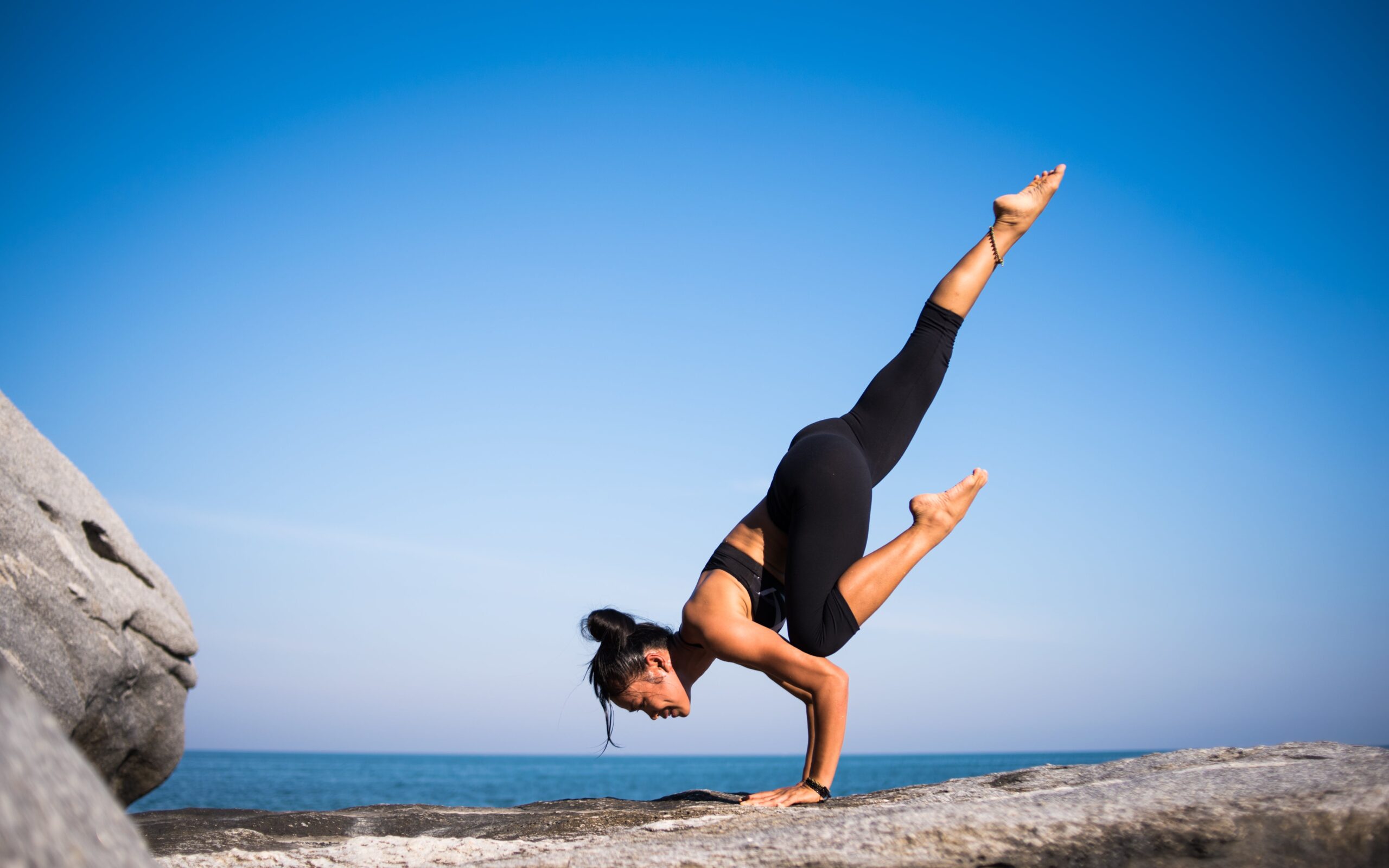The Best Yoga Poses to Help With Digestion
When digestive troubles strike, finding immediate relief is a priority. More people are turning to natural solutions, and yoga is often hailed for its ability to alleviate gastrointestinal discomfort. In this article, we’ll explore how yoga can improve digestion and guide you through six effective poses you can try today.
How Yoga Improves Digestion
Yoga is well-known for its positive impact on stress and anxiety, as well as its physical benefits like increased strength, flexibility, and balance. But did you know certain poses can also aid digestion? Understanding human biology can shed light on how this works.
The autonomic nervous system, which governs the body’s automatic processes, is divided into the sympathetic and parasympathetic systems. The sympathetic nervous system triggers the fight-or-flight response, slowing or halting digestion to direct energy toward addressing perceived threats. This can lead to digestive issues such as pain, bloating, nausea, and cramping under stress.
Conversely, the parasympathetic nervous system promotes relaxation and a return to a state of calm, lowering heart and breathing rates. Yoga can help deactivate the fight-or-flight response, using deep breathing, stretches, and twists to alleviate various digestive discomforts. Some poses also enhance peristalsis, the movement of food through the intestines.
Yoga and Irritable Bowel Syndrome (IBS)
IBS symptoms like gas, bloating, diarrhea, and constipation can result from an overactive sympathetic nervous system. Yoga can help manage these symptoms by promoting relaxation and improving digestive function. It also helps decrease the levels of the stress hormone cortisol and reduce inflammation by activating the parasympathetic nervous system.
Try These 6 Yoga Poses to Aid Digestion
1. Wheel Pose (Urdhva Dhanurasana)
This backbend pose strengthens and flexes the body, opening the shoulders, hips, and chest while compressing the digestive organs, revitalizing the digestive system, and relieving fatigue. If you normally sit in a chair all day long, do this pose to increase spinal flexibility and open the heart center.
How to do Wheel Pose:
- Lie flat on your back.
- Place your feet on the mat near your buttocks, hip-width apart.
- Inhale the arms overhead, and place your palms by your ears with fingers pointing toward your shoulders.
- As you exhale, press down with your hands and feet, and lift your shoulders and hips off the ground.
- Avoid putting too much pressure on the neck; use your hands and feet for leverage.
- Hold this position for 3-5 breaths, trying to straighten the arms and reach your chest backward.

Modifications:
- Spread your hands wider than your shoulders before lifting.
- Try the pose on the wall.
- Use yoga blocks against the wall for hand support.
- Ask a partner for assistance, holding their ankles for leverage.
2. Bow Pose (Dhanurasana)
Bow Pose stimulates the adrenal glands and increases blood flow to the digestive system, easing constipation. It also enhances posture by increasing spinal mobility and inducing a sense of wellbeing.
How to do Bow Pose:
- Start on your belly, palms on the mat, legs hip-width apart. Inhale.
- As you exhale, reach behind you and grab your ankles, or the outsides of the sole.
- Lift your head, chest, and knees slightly off the mat. Aim to keep the knees as wide as the hips.
- Lift your thighs off the mat and hold the pose for five to ten breaths before you release slowly.
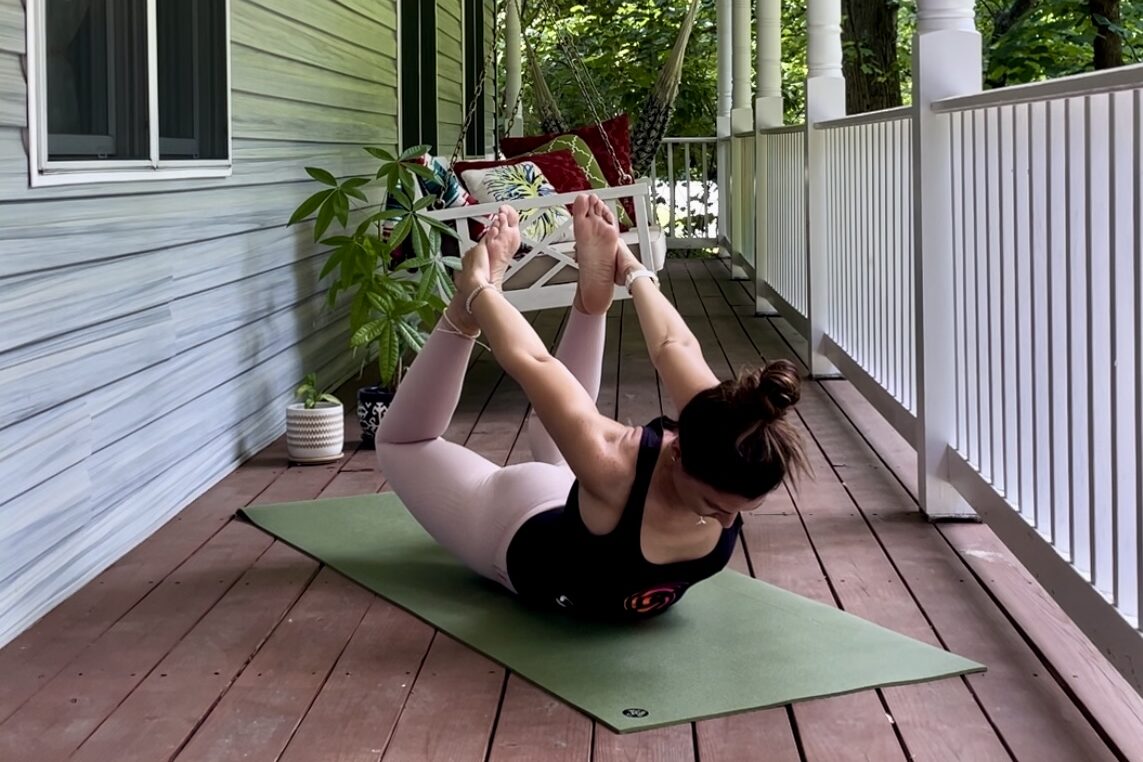
Beginner Tips:
- Use a rolled blanket under your thighs for support.
- Practice on your side to perfect the pose’s shape.
- Wrap a strap around your ankles if you can’t reach them.
- Avoid this pose if you have neck or lower back issues, or if you have high or low blood pressure.
3. Child Pose (Balasana)
This simple pose targets the abdomen and helps release excess gas. It’s perfect for relieving stress from prolonged sitting.
How to do Child Pose:
- Start on all fours with hips above knees and shoulders above wrists.
- Curl your toes under and walk your hands forward.
- Exhale, moving your buttocks back toward your heels.
- Lower your forehead to the ground and keep your lower back slightly curled.
- Press your hands down and extend your arms for a spine stretch.

Variations:
- Place a rolled blanket between your thighs and calves.
- Use a block under your forehead if it doesn’t reach the floor.
4. Cat-Cow Pose (Marjaryasana-Bitilasana)
This dynamic sequence warms up the body, improves spinal flexibility, and gently stimulates the abdominal organs. It also reduces stress and promotes proper spine alignment.
How to do Cat-Cow Pose:
- Position your hands under your shoulders and knees under your hips.
- Inhale into Cow Pose, dropping your belly and lifting your hips and heart.
- Exhale into Cat Pose, rounding your back and tucking your chin and tailbone.
- Move through Cat-Cow with the rhythm of your own breath 5 to 10 times.
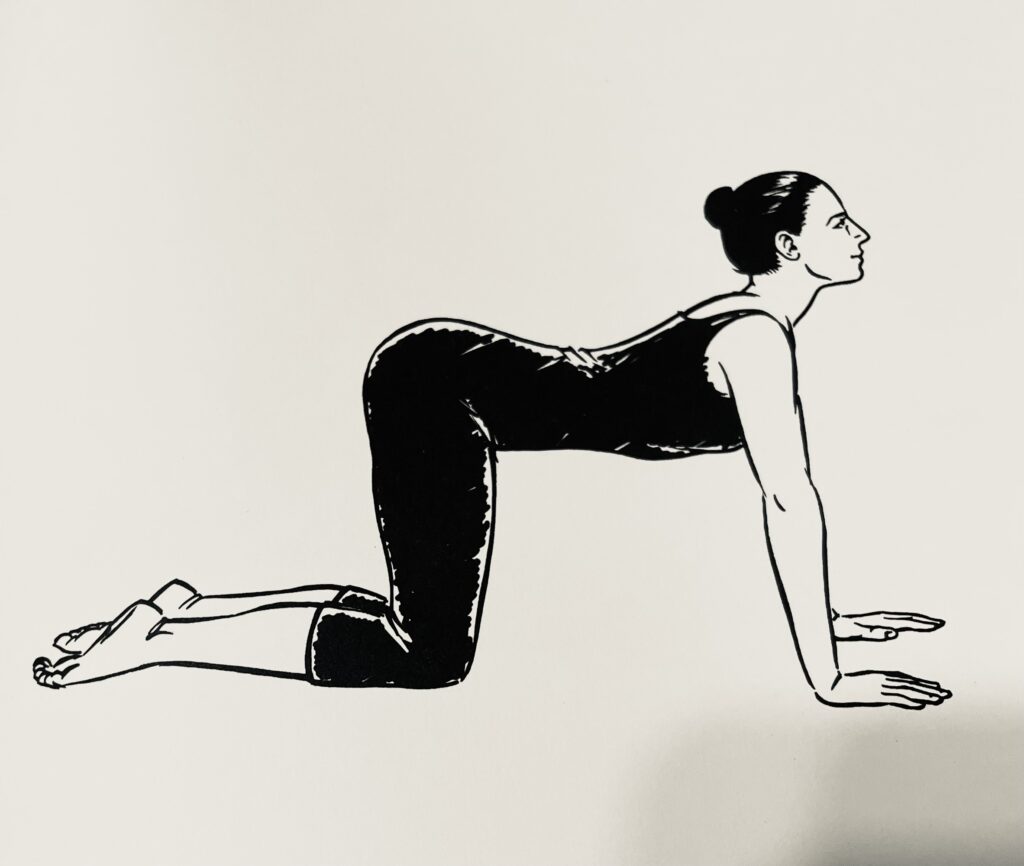

Variations:
- Use a folded blanket for knee support.
- Perform the sequence while seated on a chair if kneeling is difficult.
5. Camel Pose (Ustrasana)
Camel Pose opens the heart, stimulates the thyroid and parathyroid glands, reduces stress, and improves digestion by stretching the stomach muscles and stimulating abdominal organs.
How to do Camel Pose:
- Kneel with legs hip-width apart.
- Tilt your tailbone down and raise your heart toward the ceiling.
- Look up, press your hips forward, and place your hands on your lower back.
- If accessible, reach back and grab your heels.
- Hold for 5 to 10 breaths, then use your abdominal muscles to lift yourself back up.
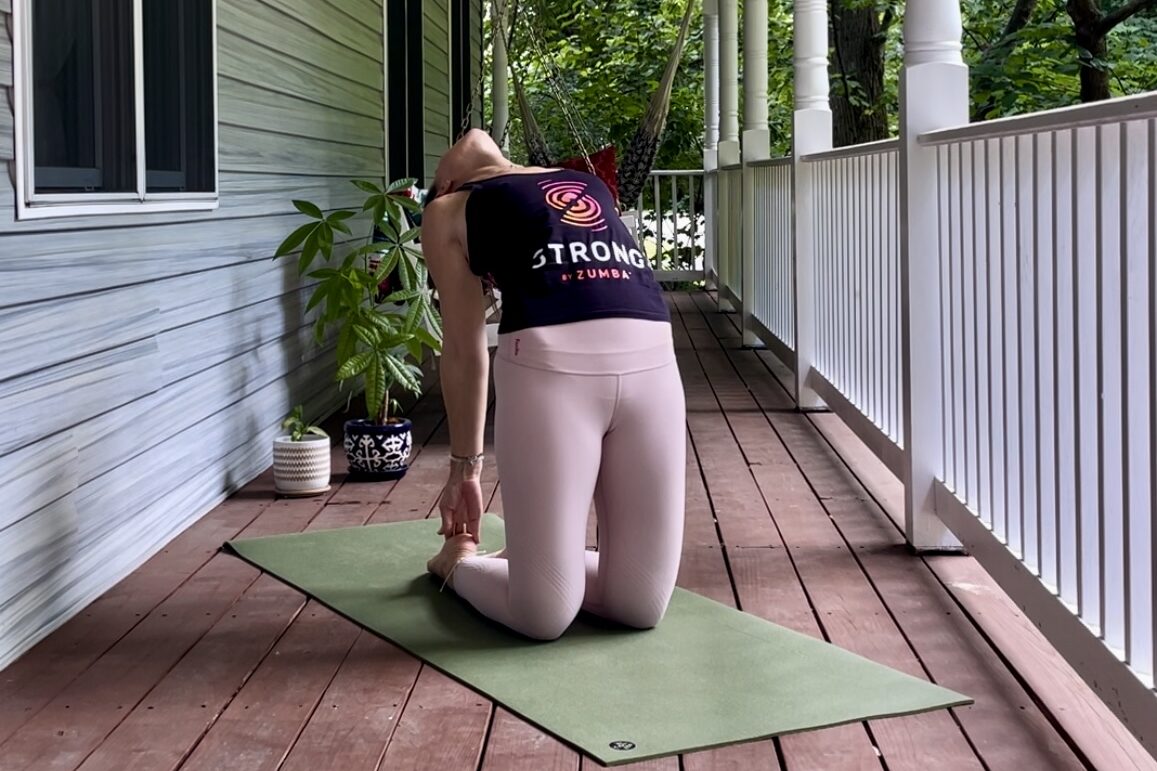
Modifications:
- Use blocks behind you for hand support.
- Curl your toes under to shorten the distance between hands and feet.
6. Garland Pose (Malasana)
Garland Pose is a beginner-friendly standing pose that stretches and strengthens the feet, ankles, knees, and hips. The compression in this position helps encourage movement through the digestive system.
How to do Garland Pose:
- Stand with your feet under your shoulders and toes turned out.
- Bend your knees and lower your buttocks almost to the floor.
- If needed, take your feet wider apart. Keep the front ribcage open and chest lifted.
- Place a rolled blanket under your heels if they come off the floor.
- Bring your elbows inside your knees and gently push the knees wider. Keep a neutral pelvis.
- Press your palms together in a prayer position at the center of your heart. Take 5 deep breaths.
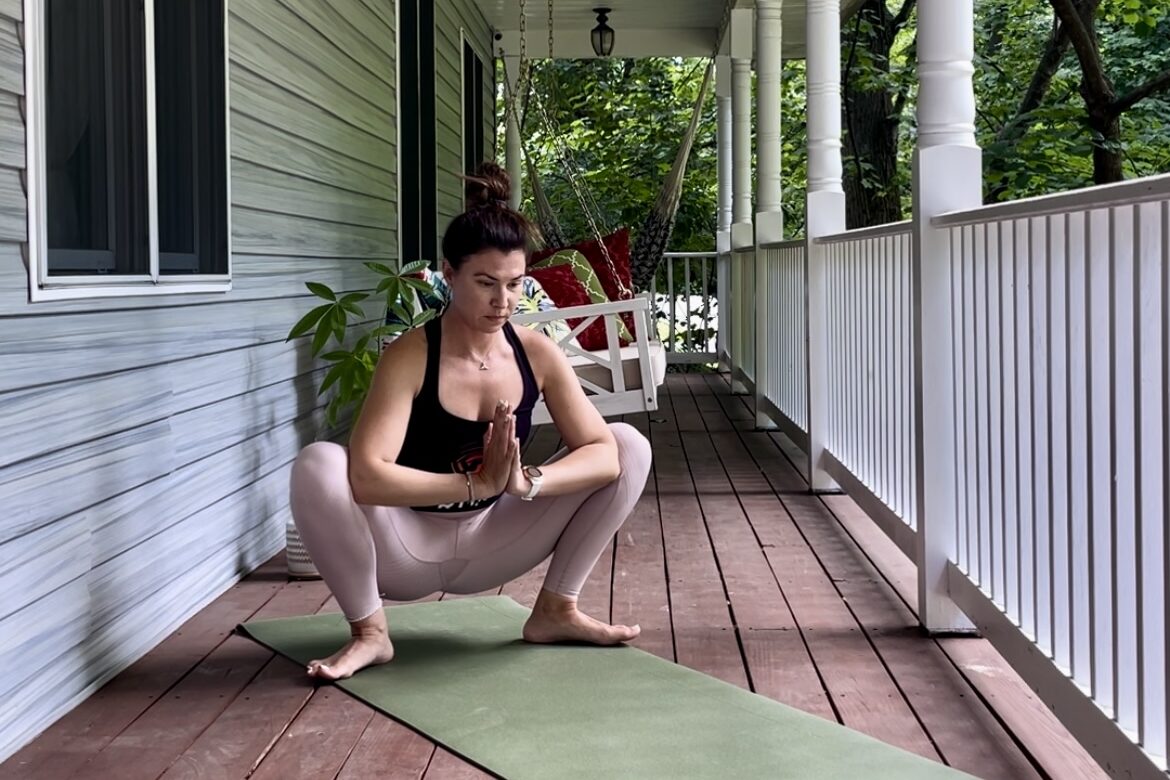
Digest to Feel Your Best
While yoga isn’t a cure-all for digestive issues, it offers significant relief and additional benefits like stress reduction, improved flexibility, and overall well-being. Try these poses when you’re feeling off, and always consult a medical professional if you have health concerns. Remember to practice these poses mindfully and drink lots of water.





